2012-05. Exhumation inside Coban’s former Military Garrison
Cobán, Alta Verapaz, Guatemala.
May 29th, 2012.
Issues: Postwar / The Disappeared
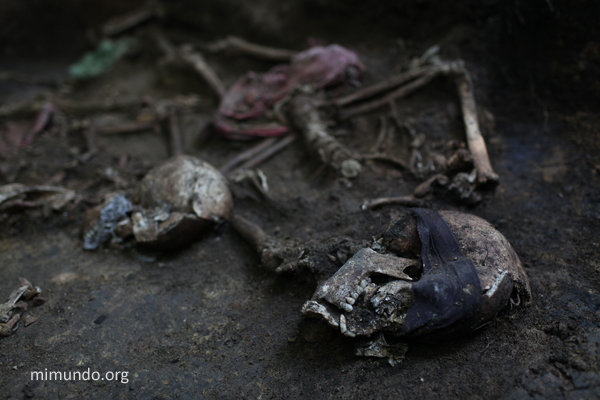 On February 27th, 2012, The Guatemalan Forensic Anthropology Foundation (FAFG) began an exhumation process inside the former Military Garrison of Coban, one of the country’s largest cities. After three months of work in search of more victims from the internal armed conflict (1960-1996), forensic anthropologists have recovered close to 100 human corpses. One mass grave has revealed the remains of 63 women and children while another includes numerous human corpses still bound, tied and blindfolded.
On February 27th, 2012, The Guatemalan Forensic Anthropology Foundation (FAFG) began an exhumation process inside the former Military Garrison of Coban, one of the country’s largest cities. After three months of work in search of more victims from the internal armed conflict (1960-1996), forensic anthropologists have recovered close to 100 human corpses. One mass grave has revealed the remains of 63 women and children while another includes numerous human corpses still bound, tied and blindfolded.
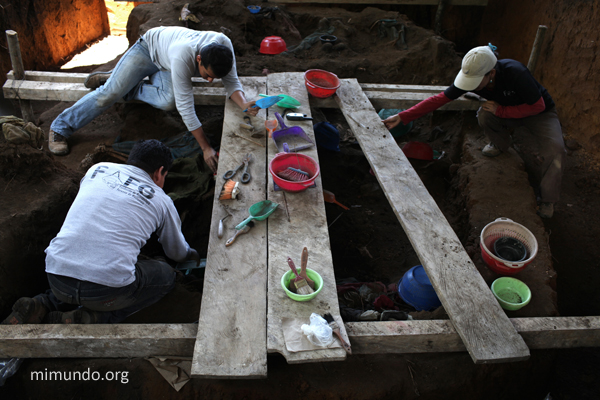 According FAFG anthropologist Selket Callejas, the 63 human remains recovered in Mass Grave number 15 belong to women and children from the Achi Maya region of Rabinal, Baja Verapaz. Due to the necklaces, silver pennants and decorative textiles found in the mass grave, experts believe the deceased came specifically from the Rio Negro community and most likely were victims of the Los Encuentros massacre. “This community was attacked by the army with grenade launchers on 14th May, 1982, killing 79 community members along with the disappearance of 15 women. All homes were burned down.” (1)
According FAFG anthropologist Selket Callejas, the 63 human remains recovered in Mass Grave number 15 belong to women and children from the Achi Maya region of Rabinal, Baja Verapaz. Due to the necklaces, silver pennants and decorative textiles found in the mass grave, experts believe the deceased came specifically from the Rio Negro community and most likely were victims of the Los Encuentros massacre. “This community was attacked by the army with grenade launchers on 14th May, 1982, killing 79 community members along with the disappearance of 15 women. All homes were burned down.” (1)
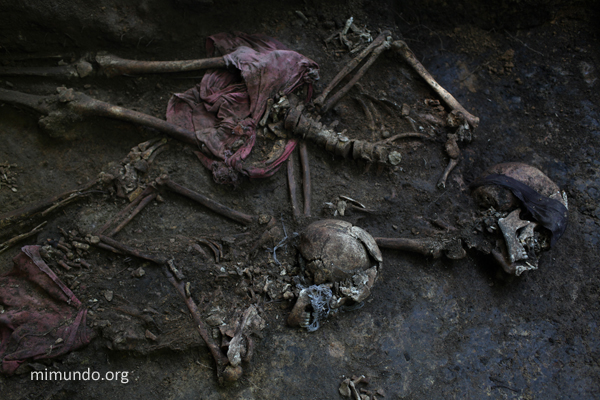 As this image displays, most of the 24 human remains found in Mass Grave 16 were found bound, tied, blindfolded and only wearing underwear.
As this image displays, most of the 24 human remains found in Mass Grave 16 were found bound, tied, blindfolded and only wearing underwear.
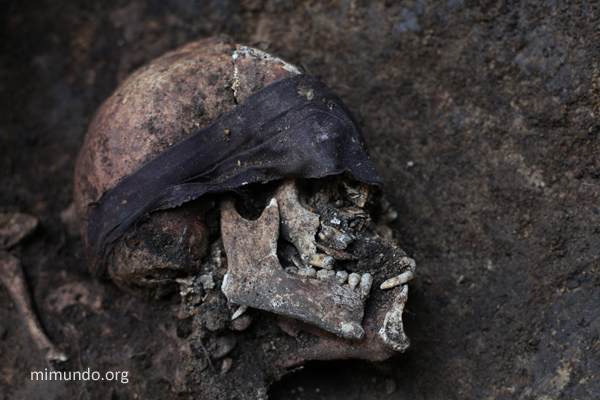 Human skull still blindfolded.
Human skull still blindfolded.
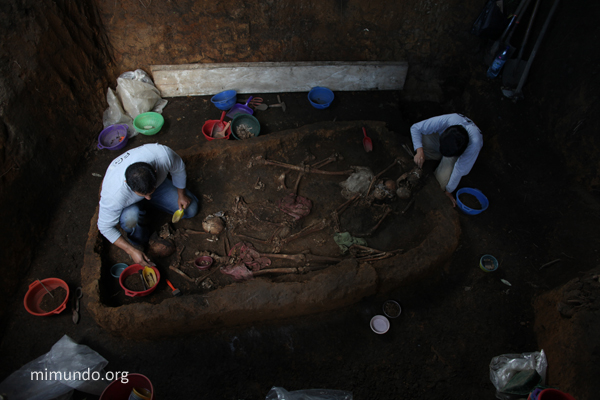 Forensic anthropologists Carlos Castellanos (left) and Raúl Archila work inside Mass Grave 16.
Forensic anthropologists Carlos Castellanos (left) and Raúl Archila work inside Mass Grave 16.
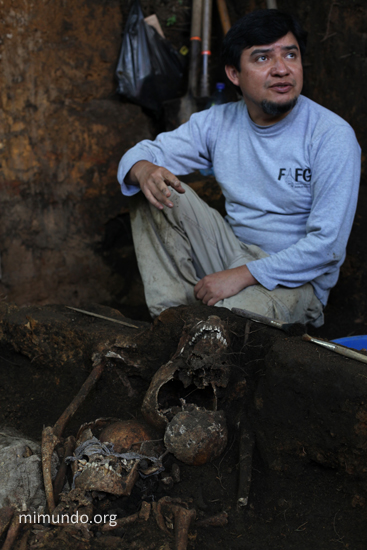 Experienced forensic anthropologist Raúl Archila explains the findings from Mass Grave 16 inside Coban’s former Military Garrison, modern day headquarters for the Regional Training Command for Peacekeeping Operations (CREOMPAZ).
Experienced forensic anthropologist Raúl Archila explains the findings from Mass Grave 16 inside Coban’s former Military Garrison, modern day headquarters for the Regional Training Command for Peacekeeping Operations (CREOMPAZ).
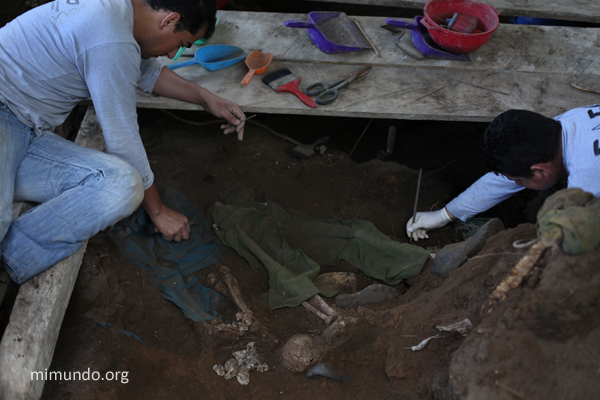 Forensic anthropologists Gerson Martínez (left) and Ramiro Martínez work inside Mass Grave 17 as the lower limbs of a human corpse can be seen inside green pants.
Forensic anthropologists Gerson Martínez (left) and Ramiro Martínez work inside Mass Grave 17 as the lower limbs of a human corpse can be seen inside green pants.
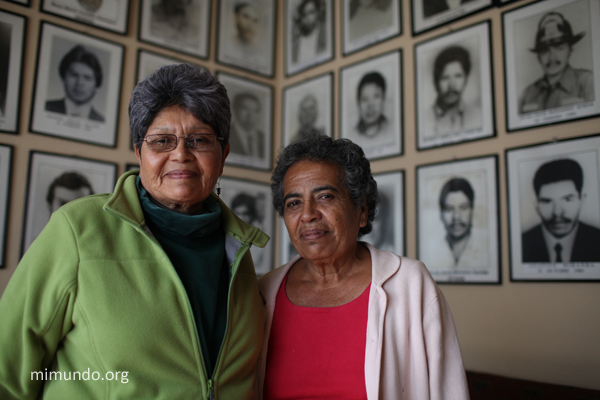 Aura Elena Farfán (left), director of the Association for Family members of the Detained-Disappeared of Guatemala (FAMDEGUA), states: “In 2004 and 2005 we began to receive several requests from people in the Coban to help them find their missing family members. Hence, FAMDEGUA began a legal procedure through the District Attorney’s office in order to find the truth.” (2)
Aura Elena Farfán (left), director of the Association for Family members of the Detained-Disappeared of Guatemala (FAMDEGUA), states: “In 2004 and 2005 we began to receive several requests from people in the Coban to help them find their missing family members. Hence, FAMDEGUA began a legal procedure through the District Attorney’s office in order to find the truth.” (2)
For more information regarding the Rio Negro case, please view:
The Chixoy Hydro-Electrical Dam and Genocide in Río Negro
Scorched Earth: The Rio Negro Massacre at Pak’oxom
This photo essay was made possible with the logistical support of Rights Action and the Department of Geography from the University of Northern British Columbia (UNBC) in Canada.
Version en español aquí.
1 Informe de la Comisión de Esclarecimiento Histórico (CEH). Anexo I: Casos Ilustrativos, Tomo I. Caso Ilustrativo No. 10: “Masacre y eliminación de la comunidad de Río Negro”. P. 50.
2 Ramos, Jerson. “Hallan osamentas humanas en destacamento militar de Cobán” elPeriodico, March 3rd, 2012.
http://www.elperiodico.com.gt/es/20120303/pais/208929/

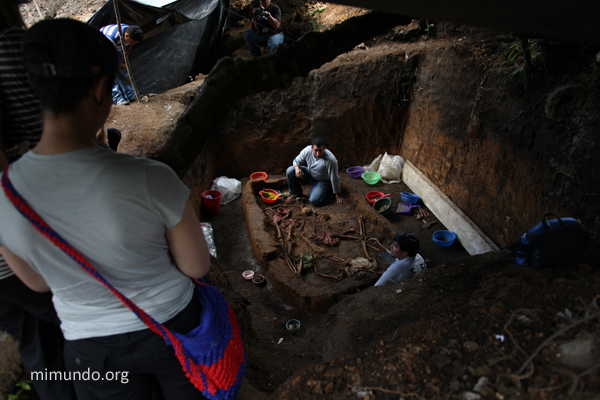
6 thoughts on “2012-05. Exhumation inside Coban’s former Military Garrison”
Comments are closed.